In the Forest of Fontainebleau: Painters and Photographers from Corot to Monet

Once the domain and hunting ground of kings, the Forest of Fontainebleau, some thirty-five miles southeast of Paris, is where French landscape painting and photography took root. Rough and unspoiled, the forest was exalted as an example of nature in its purest state. Its distinctive terrain — verdant woods, magnificent old-growth trees, imposing rock formations, and stark plateaus — offered a wealth of motifs that attracted painters and photographers alike. The forest was such a point of national pride that a portion of it was set aside in 1861 as the first nature preserve in history.
Like Italy before it, Fontainebleau became an obligatory destination for any serious landscape artist. During the 1820s and 1830s, painters such as Jean-Baptiste-Camille Corot and Théodore Rousseau helped to transform the nearby villages of Barbizon and Chailly into informal artists’ colonies and the forest into an open-air studio. Through their close observation of the native countryside, these artists sparked a movement known as the Barbizon School that introduced a new sense of naturalism into landscape painting and challenged the French Royal Academy’s preference for idealized pastoral visions of nature. In the 1860s a new generation of artists that included Claude Monet, Alfred Sisley, and Auguste Renoir discovered Fontainebleau, laying the foundations for the light-filled depictions that would bring them fame as impressionists.
A decade after the introduction of photography in 1839, photographers such as Gustave Le Gray arrived in the forest, similarly seeking to capture the ephemeral moods of nature. Often working side by side, photographers and painters inspired each other to explore new ways of representing landscape. This exhibition brings together paintings, pastels, and photographs, as well as artists’ equipment and tourist ephemera, to celebrate the dynamic relationship between artists and locale at a crucial point in history when a new modern art was forged in the Forest of Fontainebleau.
The exhibition is made possible by The Florence Gould Foundation.
The exhibition is supported by an indemnity from the Federal Council on the Arts and the Humanities.
Claude-Françoise Denecourt, Carte indiquant les sites et points de vue remarquables de la Forêt de Fontainebleau, 1839, Private Collection
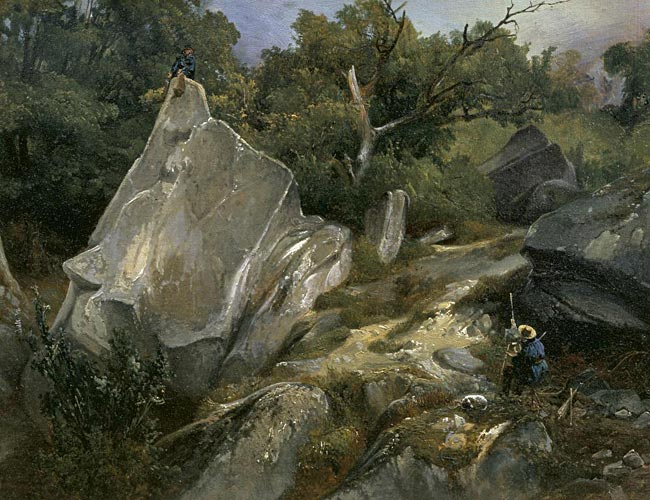
Augustin Enfantin, An Artist Painting in the Forest of Fontainebleau, c. 1825, Private collection
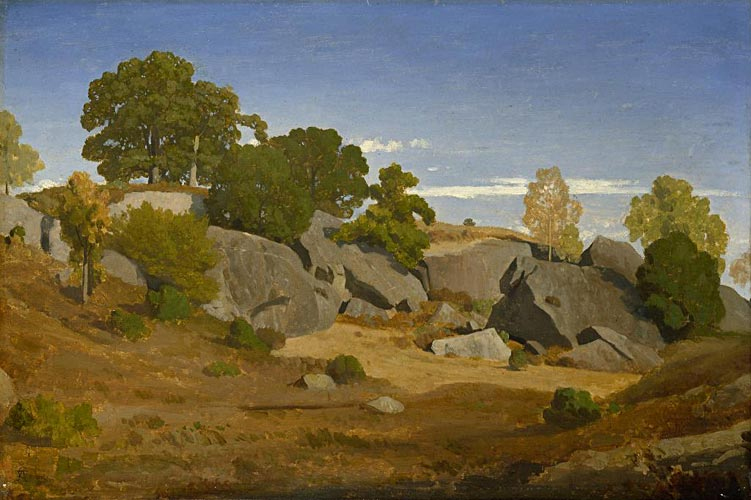
Théodore Claude Félix Caruelle d'Aligny, Rocks at Fontainebleau, c. 1842, Musée du Louvre, Paris, Gift of Maurice Bourdot-Lamotte, 1951
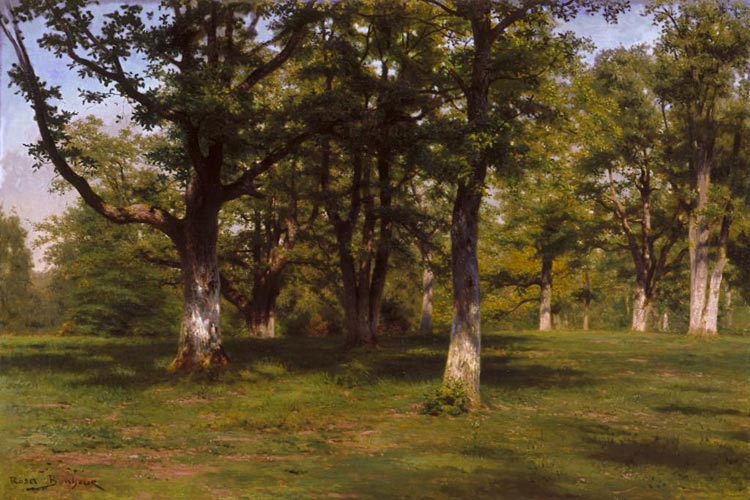
Rosa Bonheur, Forest of Fontainebleau: Spring in the Woods, 1860–1865, Private collection
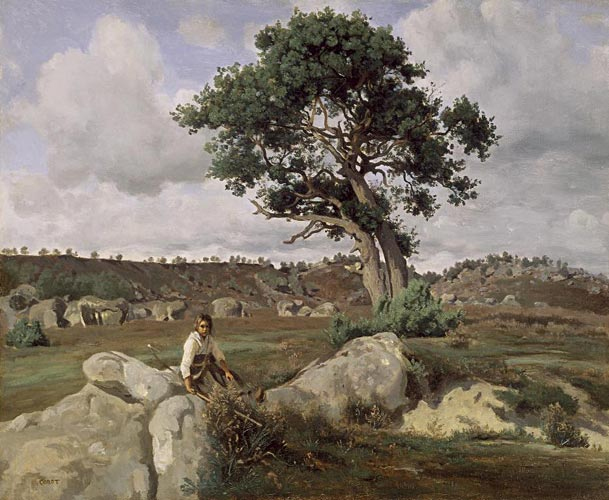
Jean-Baptiste-Camille Corot, Le Rageur, Forest of Fontainebleau, c. 1830, Private collection
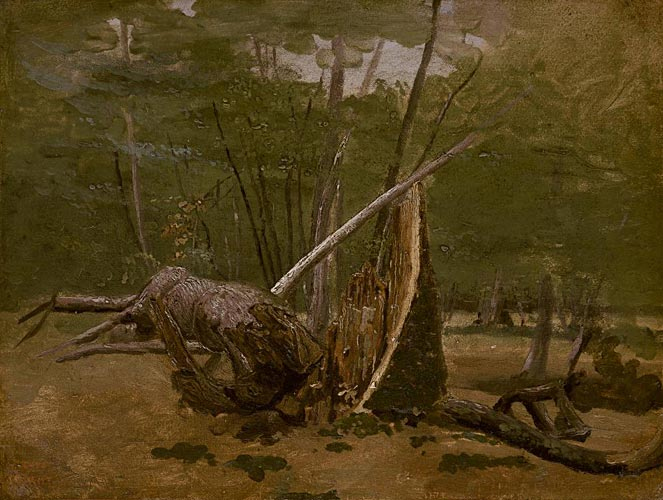
Jean-Baptiste-Camille Corot, Study of a Tree Trunk in the Forest of Fontainebleau, October 1822, John Schlichte Bergen Gallery, Amsterdam, and Jack Kilgore, and Co. Inc., New York City
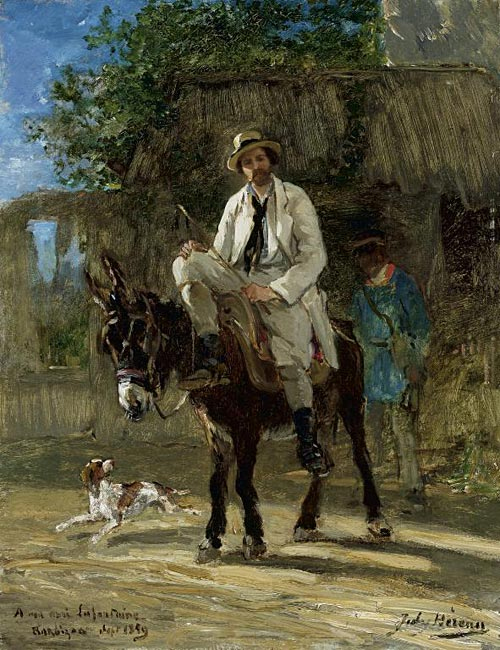
Jules Hereau, Monsieur Lafontaine Visits Barbizon, September 1859, Private collection, Courtesy of Douwes Fine Art (since 1805), Amsterdam

Narcisse Diaz de la Peña, The Edge of the Forest at Les Monts-Girard, Fontainebleau, 1868, oil on canvas, Chester Dale Fund, 2000.37.1
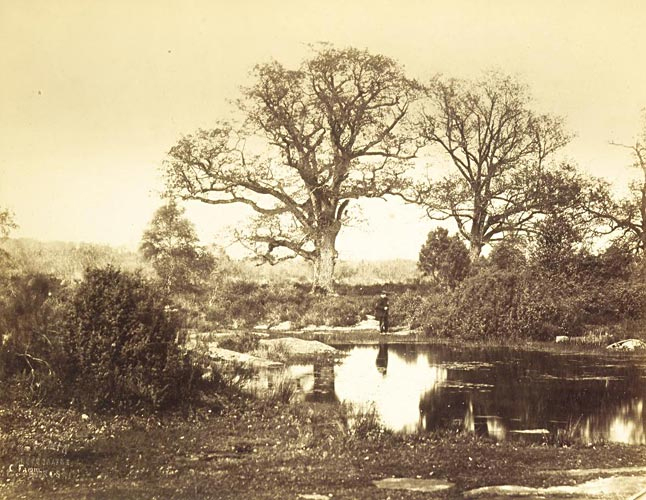
Constant Famin, Théophile Chauvel near the Mare aux Fées, 1865–1870, Dietmar Siegert Collection
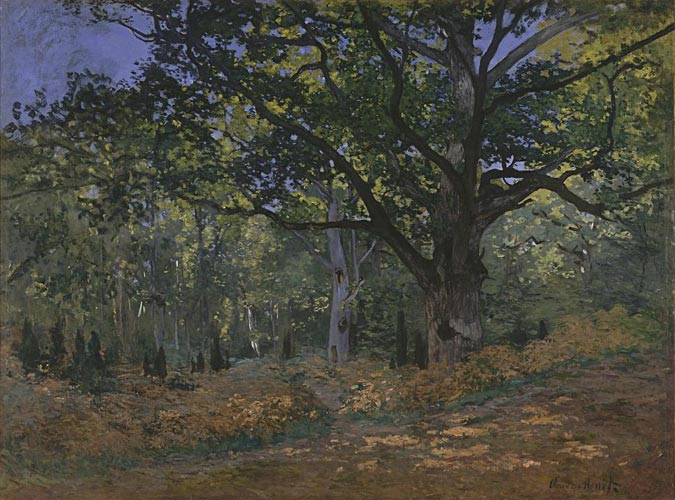
Claude Monet, The Bodmer Oak, Fontainebleau Forest, 1865, Lent by The Metropolitan Museum of Art, Gift of Sam Salz and Bequest of Julia W. Emmons, by exchange, 1964

Claude Monet, Bazille and Camille (Study for "Déjeuner sur l'Herbe"), 1865, oil on canvas, Ailsa Mellon Bruce Collection, 1970.17.41

Constant Alexandre Famin, Forest Scene, c. 1865, albumen print from collodion negative mounted on blue paper, The Horace W. Goldsmith Foundation through Robert and Joyce Menschel, 2004.42.1

Alphonse Jeanrenaud, Fontainebleau, c. 1860s, albumen print, The Amy Rose Silverman Fund and Horace W. Goldsmith Foundation through Robert and Joyce Menschel, 1999.70.1
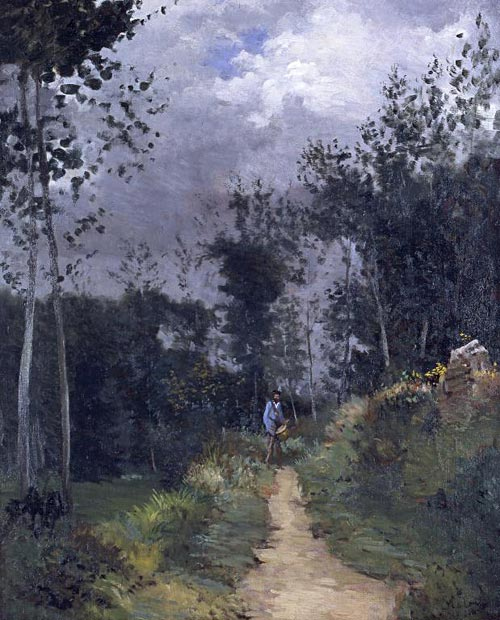
Alfred Sisley, Rural Guardsman in the Fontainebleau Forest, 1870, Mr. and Mrs. Marsh Gibson

Adolphe André Wacquez, En Foret a Breau, 1860, cliche-verre, Andrew W. Mellon Fund, 1978.1.6
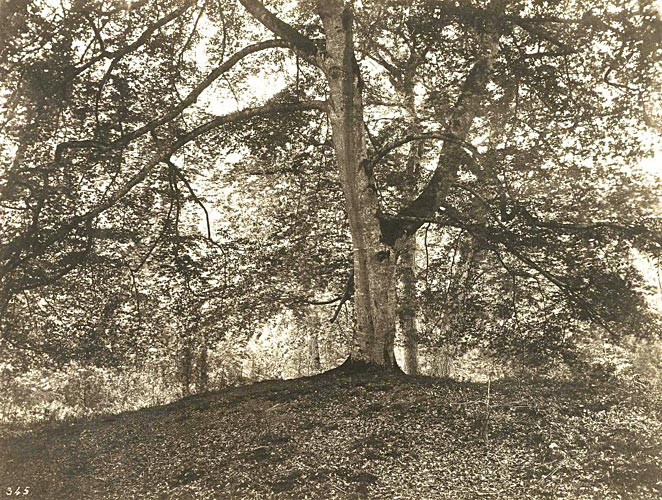
Eugène Cuvelier, Beech Tree near the Bodmer Oak, early 1860s, Private collection
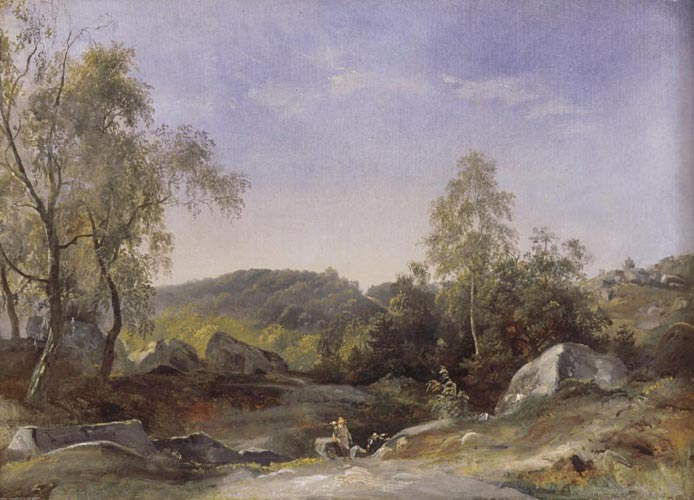
Auguste-Xavier Leprince, Painters at Rest, Fontainebleau, c. 1824, Musée Départmental de l'Oise, Beauvais

Auguste Giraudon's Artist, Peasant, c. 1870, albumen print from collodion negative, Horace W. Goldsmith Foundation through Robert and Joyce Menschel, 2002.82.3

Eugène Cuvelier, Mare à Piat (Marsh at Piat), c. 1863, salted paper print, Gift of Mary and Dan Solomon and Patrons' Permanent Fund, 2006.133.63
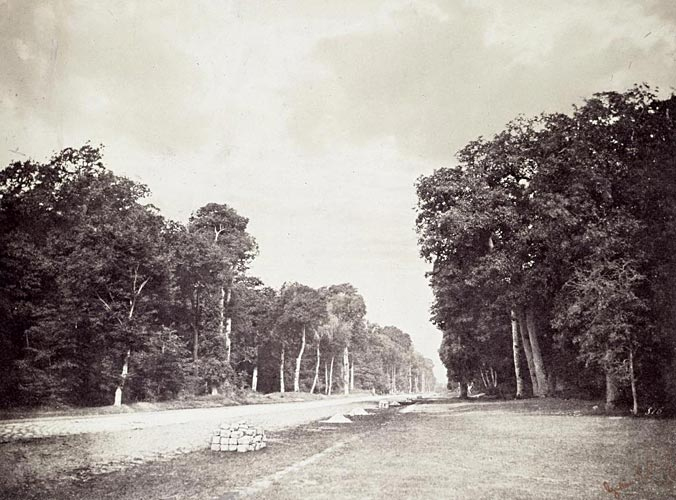
Gustave Le Gray, The Road to Chailly, Forest of Fontainebleau (Pavé de Chailly), c. 1852, Victoria and Albert Museum, London, Part of the Townsend Bequest
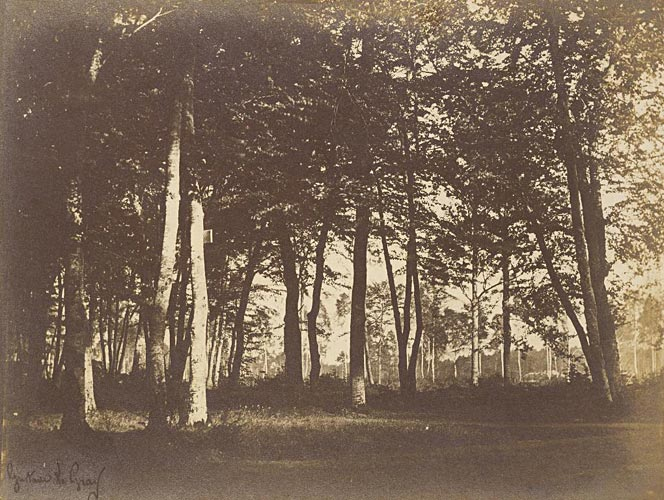
Gustave Le Gray, Study of Trees and Pathways, 1849, The J. Paul Getty Museum, Los Angeles
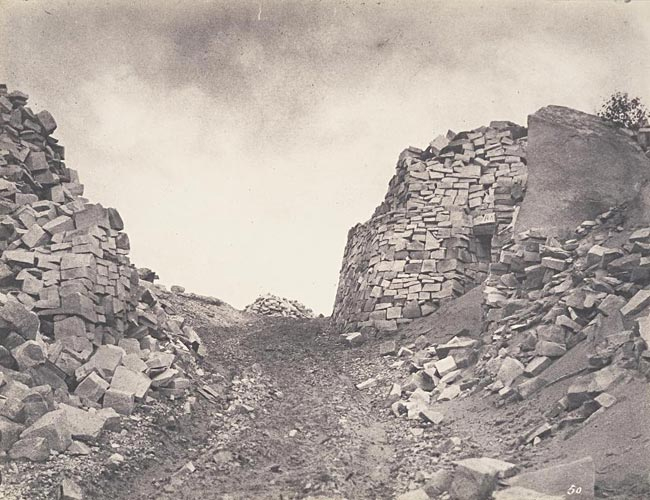
Eugène Cuvelier, Quarry at the Sands of Macherin, 1863, Lent by The Metropolitan Museum of Art, Purchase, Harriette and Noel Levine Gift and Rogers Fund, 1996
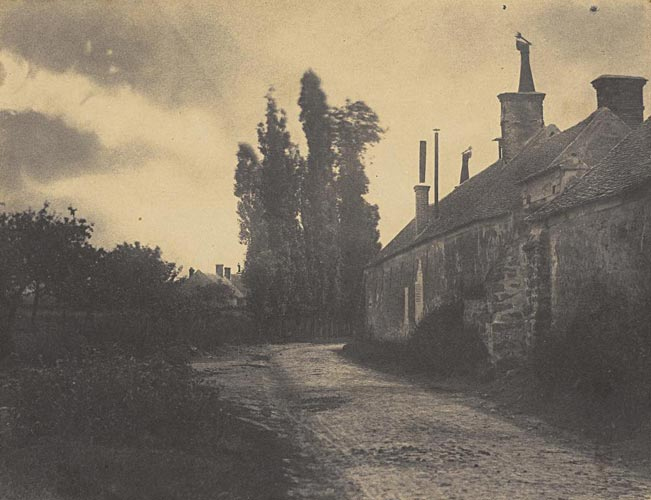
Eugène Cuvelier, Farm, Barbizon, early 1860s, Collection Tel Aviv Museum of Art